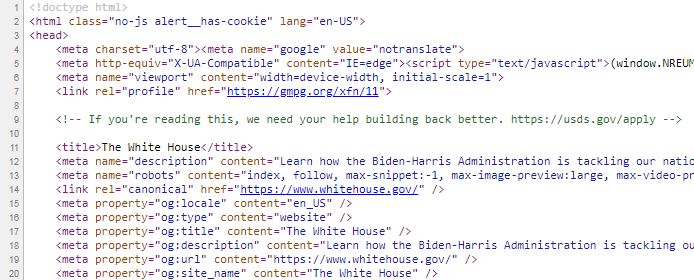
President Joe Biden took office today and unveiled a new whitehouse.gov that has been relaunched on WordPress. The previous administration switched from Drupal to WordPress in 2017, and technologists working with the Biden administration decided to stick with the same CMS.
In keeping with the multilingual and accessibility features implemented on the Biden-Harris transition team website, whitehouse.gov launched with toggles for contrast and font size, along with a Spanish language switcher. The relaunched site also includes an accessibility statement with a commitment from the administration to work towards conforming to the Web Content Accessibility Guidelines (WCAG) version 2.1, level AA criteria.
Much of the content and design from the transition website has been preserved. The transition site now forwards to whitehouse.gov, while links to the previous administration’s pages land on a 404 page with a link to archived presidential websites.
Savvy observers might notice that the typography has been updated from the transition site, flipping the Mercury and Decimal typefaces. Hoefler&Co, the typeface design firm that created these typefaces for Biden’s 2020 campaign, tweeted about how “the serif Mercury felt more like the voice of the institution.” The sans-serif Decimal functions more in a supporting role on the site.
Web professionals kicked the tires a bit and noticed the site is putting up fairly decent Lighthouse scores.
Under the hood, code snoopers noticed an advertisement for the U.S. Digital Service (USDS), the group of technologists who maintain many of the federal government’s public-facing digital services.

In addition to the message from USDS, the site’s source code includes a link to the US government’s analytics program at analytics.usa.gov. Tim Lowden, who manages the federal government’s aggregated web analytics initiative, said this data has been made available for the first time since late 2017.

The analytics service records more than 2.5 billion pageviews across federal government websites each month. The data is available to the public, but it does not track individuals, and anonymizes the IP addresses of visitors. It shows information for visitors’ devices, browsers, operating systems, and location broken down into cities and countries. Many of those visiting the site today are from countries other than the U.S.











